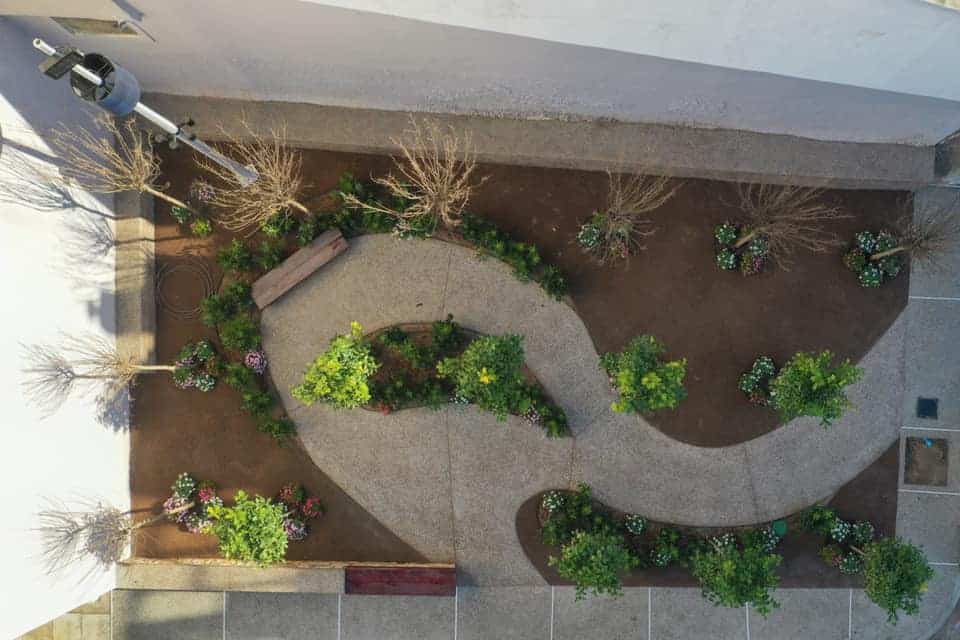POCKET PARKS ARE SPROUTING UP IN ATHENS TO TACKLE POLLUTION AND HEAT
HOW 'POCKET PARKS' ARE HELPING ATHENS TACKLE POLLUTION
Greece's capital, Athens, has started creating “pocket parks” to tackle its pollution and heat. The parks transform small plots formerly filled with garbage and weeds into green spaces. The project is part of wider measures to make the city greener, cooler and improving quality of life, the mayor says. Closed roads have become pedestrian and bike routes, and old fountains, which lower temperatures and improve air quality, are being repaired, say the WorldEconomicForum.
The benefits of Pocket Parks are many and various. Scientists from all over the world are promoting ‘pocket parks’ as an effective way for tackling crime, combating isolation in densely populated cities and, most importantly, for protecting the environment. Source: GreekCityTimes
SECOND ‘POCKET PARK’ IN ATHENS’ KOLONOS DISTRICT OPENS
Last month, the Greek City Times reported that the Municipality of Athens had opened its second “pocket park”, a small green area, in the heart of Kolonos district. “It is one of these small green oases in the heart of the neighbourhood, which are created in Athens, in the models of cities where their existence changed the physiognomy of entire areas but also positively affected the daily life of the inhabitants,” according to an announcement by the municipality.
The new ‘pocket park’ is located at the junction of Kilkis and Alamanas streets. It is considered unique due to the materials used for its development- environmentally friendly concrete to construct the ground surface and sidewalk, recycled wood used for the seating areas and an underground irrigation system for watering the plants. Source: GreekCityTimes
THE NEW PARK IS CONSIDERED UNIQUE DUE TO ITS APPEARANCE AND THE MATERIALS USED
Pocket parks are urban open spaces on a small-scale which have the potential to provide relief from the city and contribute positively to the urban microclimate. Scientists from all over the world are promoting pocket parks as an effective way to protect the environment, as well as to mitigate isolation in densely populated areas and prevent crime.
According to Greek Travel Pages, Athens’ first pocket park was created in the district of Kypseli. The second pocket park in Kolonos is one of these small oases of greenery created in the Greek capital.
Located at the junction of Kilkis and Alamanas streets, the park is considered unique due to its appearance and the materials used for its development, such as environmentally friendly concrete to construct the ground surface and sidewalk. Recycled wood was used for the seating areas and deciduous trees have been planted. An underground irrigation system is used for watering the plants.
Moreover, an advanced technology photovoltaic system has been used for the park’s lighting. It features a digital panel with information on temperature, humidity and other environmental parameters.
The latest pocket park is autonomously illuminated by a photovoltaic system. The system includes a digital panel with information on temperature, humidity and other environmental parameters. Kolonos’ pocket park was developed with the support of Heracles Group, a leading cement producer in Greece. Source: GreekCityTimesAthens Mayor Kostas Bakoyannis stressed the significance of such parks for the city: “There are many ways to reactivate the neighborhood community. Pocket parks are one such essential solution. They breathe life into areas where debris, darkness and delinquency once stood… It is also important that pocket parks are created at no cost for taxpayers, as they mobilise the private sector to participate in such actions with social responsibility,” he said at the opening of Athens’ second “pocket park” last month. Source: GTP
THE BENEFITS OF MORE URBAN PLANTING
According the the United States Environmental Protection Agency (EPA), the use of trees and vegetation in the urban environment brings benefits beyond mitigating urban heat islands including:
Reduced energy use: Trees and vegetation that directly shade buildings decrease demand for air conditioning.
Improved air quality and lower greenhouse gas emissions: By reducing energy demand, trees and vegetation decrease the production of associated air pollution and greenhouse gas emissions. They also remove air pollutants and store and sequester carbon dioxide.
Enhanced stormwater management and water quality: Vegetation reduces runoff and improves water quality by absorbing and filtering rainwater.
Reduced pavement maintenance: Tree shade can slow deterioration of street pavement, decreasing the amount of maintenance needed.
Improved quality of life: Trees and vegetation provide aesthetic value, habitat for many species, and can reduce noise.
Original article from BrightVibes.
